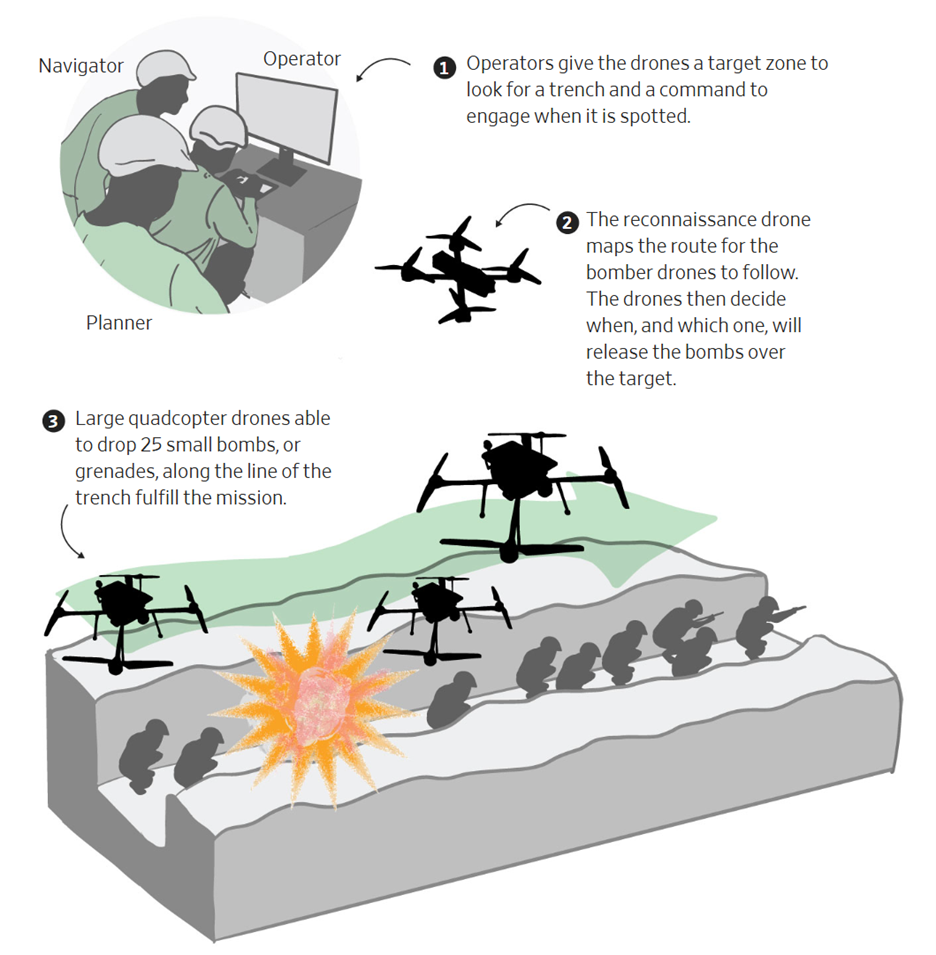Why This NATO Defense Firm Outgrows Apple
 |
| By Michael A. Robinson |
Outgunned and outmanned, Ukraine has survived this war by making a weapon out of ingenuity.
When Russia rolled in with tanks and artillery, Ukraine answered with low-cost Javelin missiles that knocked out armored columns.
And when Moscow launched waves of airstrikes, Ukraine used nimble air-defense systems that shot them down at a fraction of the cost.
And of course, drones have become the hallmark of this fight.
From $500 hobby models modified to drop grenades to long-range UAVs striking deep into Russian territory, they’ve turned the skies into a constant duel of innovation.
Now comes the next leap: swarm warfare.
Using AI, Ukraine has fielded drones that don’t just fly — they “think” as a group.
This technology could make the world safer because it can shift the balance of power.
Instead of fielding nukes, small nations can use swarm tech to keep larger foes at bay.
And today I want to reveal a NATO-centric leader that’s growing profits 75% faster than Apple.
A recent Wall Street Journal story gave a firsthand account of the AI swarms and their operators in action.

Everything about the operation was a huge shift from traditional warfare.
Ukraine is where the future of warfare is taking place in the real world.
A three-man team — a navigator, a pilot and planner — managed the swarm.
On this mission, it was a three-drone operation. But this small team can handle up to eight drones.

Because the aircraft work together, they don’t need a person per drone as was the case before smart swarms came along.
One drone is the “scout,” and the other two carried the bombs.
The human planner told the scout where its destination was and what to look for when it got there. It could be a trench with a platoon of soldiers, for example.
He put in the position and the drones worked together to get there.
Once they arrived and the team approved the target, the two “bombers” dropped their payloads.
What’s more, many of the drones are being built with 3D printers near the front lines. That means they can run more missions, faster.
This shift is inspiring private equity-fueled startups in both AI and drones to enter this new sector.
And it’s challenging the major defense players to adapt quickly to this new generation of battlefield tools.
For investors, it’s a very exciting time because the military drone market is one of the fastest-growing fields of the $2.7 trillion global defense industry.
A Global Drone Leader
Right now, one of my favorites in the drone sector is UK-based BAE Systems (BAESY).
But don’t think BAE is just about selling to Great Britain. BAE is a major global player in the defense industry.
Before I talk about that, let’s stick to its drone technology.
Early in September, the largest defense company in the world, U.S.-based Lockheed Martin, announced a groundbreaking first-ever partnership with BAE.
Lockheed’s legendary Skunk Works, the top-secret R&D unit that gave us the U-2 and SR-71 spy planes, is partnering with BAE’s R&D lab FalconWorks.

The goal is to beat the startups to build modular, AI swarm drones that are cheap and can be deployed from air, land or sea.
Their first effort will be a smart swarm that deploys a wave of electronic warfare to disable and destroy enemy radar, drones and communications.
The fact that Lockheed chose BAE for this unique pact shows how respected BAE is in the defense sector, not just in Europe but the U.S. as well.
And BAE has a range of drones that are already flying. Adding the smart swarms while making them easier to build and deploy.
Targeting NATO’s Defense Boom
In other words, BAE is earning quite the name for itself.
Consider that it recently won a $17 billion laser-guided weapons system contract with the U.S. Navy.
Under pressure from Trump, NATO intends to spend more on its own defense. And it’s not just Trump.
NATO leaders remain concerned about Russia’s war on Ukraine.
Those two factors mean NATO’s new defense spending will soon rival that of the U.S.
That’s a huge spending boost for Europe. And BAE will likely be a big winner because many new orders will go to European defense firms.
For instance, BAE recently signed a deal with Poland to build a new factory to make more artillery shells.
Between supplying Ukraine and building Poland’s own surplus to deter Russia, this is a significant deal.
BAE also just received a record order from six nations — Finland, Sweden, Norway, Estonia, Lithuania and the Netherlands — for its Combat Vehicle 90.
It also recently signed a $14 billion deal with Norway for four new frigates and another deal to build a huge new shipyard in Norway.
Outgrowing Apple
And the growing demand for its space and defense products is showing up in BAE’s earnings.
BAE recently grew its per-share profits 21%. That’s very fast for a global defense firm.
It means BAE is growing profits like a tech firm — its earnings are growing 75% faster than Apple.
With AI swarms rewriting the rules of combat and NATO opening
Best,
Michael A. Robinson
P.S. Before I let you go, I have one more important note to share …
On Tuesday, I was invited to take part in the “All-In Retirement Income Challenge.”
Tech and income aren’t normally spoken of in the same conversation. But I’m promised it will be during this event.
It takes place on Tuesday, Oct. 28, at 2 p.m. Eastern.
Whether you’re primarily a tech investor or an income one, you’ll want to make sure you save your seat.

